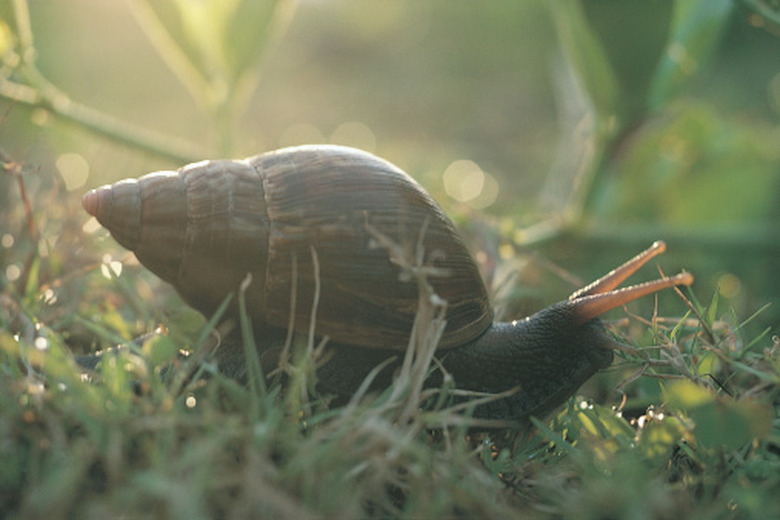Differences Between Worms & Snails
Worms and snails are common sights in your garden. You'll often find worms squirming on the ground and snails crawling across leaves and up plant stems. Both animals are known for being slimy and squirmy, but there are a lot of differences between them.
Habitats
Habitats
Snails can be found on nearly every continent and within a variety of habitats, including terrestrial and aquatic environments. Some snails have lungs for breathing air, and others are equipped with gills for underwater living. Numerous varieties can live in or out of the water. Earthworms, on the other hand, live underground within soil, though others can be found within bunches of decaying leaves. However, the term "worm" is very broad and also applies to worms like hookworms, flatworms and inchworms, all of which can thrive in various habitats like water or may even be parasitic.
Movement
Movement
Snails move forward by undulating a muscular foot beneath its body, allowing it to inch along slowly, where the "slow as a snail" stereotype comes from. They produce a viscous mucus to help reduce friction between their foot and the ground, accounting for the distinctive slime trails they leave. Earthworms and many other worms move by expanding and contracting their body segments, which push them along the ground or through porous soil. It may also widen its body and then narrow it out again to help it wedge between small spaces.
Diet
Diet
Snails have varying diets between species. Some eat plant material exclusively, and others eat plant material and detritus. Aquatic species may eat algae off the rocks or other surfaces. Earthworms ingest soil. Their bodies will then digest the organic nutrients, breaking them down and expelling them back into the soil through excretion, where plants will make good use of them. Other types of worms may consume detritus. Parasitic tapeworms absorb the nutrients that its host eats.
Predators
Predators
Both snails and earthworms have similar predators, including birds. Humans eat snails as a delicacy and use earthworms as bait for fishing. Snails have better protection from predators because of their hard shells, but earthworms are often better hidden because they spend most of their time below ground.
Reproduction
Reproduction
Many worms and snails are hermaphrodites, meaning that they have both male and female genitals. Worms, particularly earthworms, will copulate and then store the sperm until later. It will eventually combine the sperm and its eggs into a cocoon. Other worms may have different reproductive methods, with tapeworms and flatworms usually producing numerous parasitic eggs. Snails, on the other hand, are egg layers. When they copulate, the eggs are immediately fertilized and then laid days later on leaves or, in the case of aquatic species, on rocks.
Cite This Article
MLA
Shields, Brenton. "Differences Between Worms & Snails" sciencing.com, https://www.sciencing.com/differences-between-worms-snails-12532899/. 21 July 2017.
APA
Shields, Brenton. (2017, July 21). Differences Between Worms & Snails. sciencing.com. Retrieved from https://www.sciencing.com/differences-between-worms-snails-12532899/
Chicago
Shields, Brenton. Differences Between Worms & Snails last modified August 30, 2022. https://www.sciencing.com/differences-between-worms-snails-12532899/
